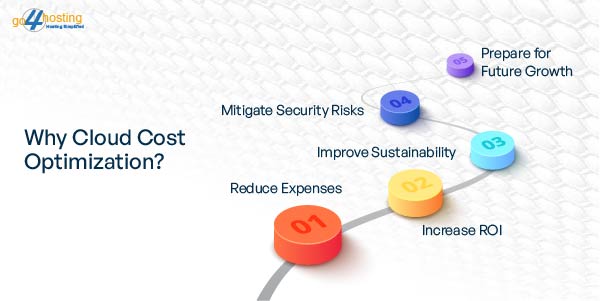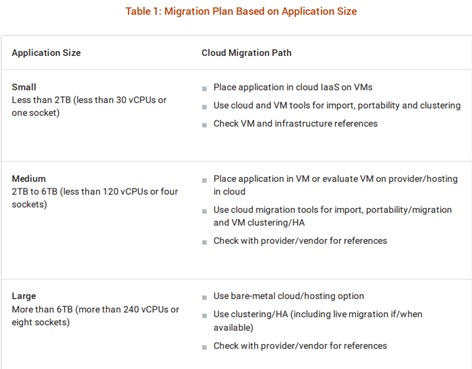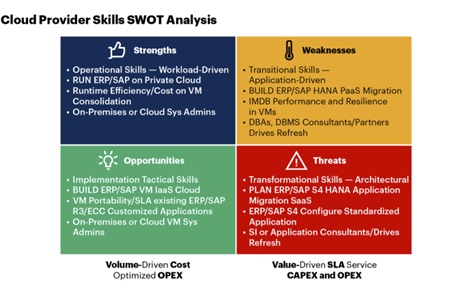Table of Content
Welcome, cloud hosts!
Are you feeling the heat from your cloud bills?
You’re not alone. Whether you’re a budget-conscious startup or a stressed-out IT admin, our five proven cloud cost optimization strategies can unlock significant savings and empower you to take control.
That’s exactly what you’ll find in this blog.
So, get ready to reclaim your budget, boost efficiency, and achieve peace of mind – all in the next few months. Ready to turn your cloud frown upside down? Dive in!
Why Cloud Cost Optimization?
Do You Know? A survey report in 2023 revealed that 82% of organizations across the globe prioritize managing cloud costs. Despite this high percentage, a significant number of enterprises still need to work on controlling expenses effectively.
In an attempt to optimize cloud costs, these organizations might spend even more while seeking external assistance.
Now, you can go it alone, but should you?
Cloud cost optimization is crucial to avoid overspending. There are n number of common mistakes enterprises perform. These mistakes may include wrong instance types and a lack of adequate measures to track cloud costs. So, it is essential to consider cloud cost optimization as an ongoing priority rather than a one-time activity.
Moreover, many enterprises are tempted to postpone cloud migration because of concerns about disruption, inconvenience, cost, and the risk of errors. These challenges can be overcome with the aid of a trusted, experienced technology migration partner.
Cloud bill shock can strike when you least expect it. Don’t wait until then! Let’s build your defenses now. Before diving into our secret sauce, let’s unlock why businesses are taking control of their cloud spending. Scroll down to explore the reasons behind cloud cost optimization:

Reduce ExpensesThis is the most apparent benefit. Unoptimized cloud spend can quickly spiral out of control, interrupting your profits and hindering growth. |
Improve EfficiencyOptimizing resources ensures you’re only paying for what you use. This eliminates waste and improves the performance-to-cost ratio of your cloud infrastructure. |
Increase ROIBy getting the most out of your cloud investment, you maximize your return on investment (ROI). It frees up resources for other initiatives and fuels further business growth. |
Enhance ScalabilityOptimizing your cloud usage makes scaling your resources up or down as needed easier. This flexibility supports business growth and agility. |
Avoid Cloud WasteMore efficient cloud environments often require more resources like idle VMs or underutilized storage. Optimization eliminates this waste and streamlines your operations. |
Boost ProfitabilityUltimately; cloud cost optimization improves profitability by reducing wasted expenses and maximizing the value you get from your cloud investment. |
Mitigate Security RisksOverprovisioning resources creates unnecessary attack surfaces, increasing security risks. Optimization helps ensure you only have the resources you need, enhancing security. |
Improve SustainabilityInefficient cloud usage leads to increased energy consumption, impacting your environmental footprint. Optimization aligns your cloud use with sustainability goals. |
Prepare for Future GrowthAs your business grows, your cloud needs will evolve. Optimizing now lays the foundation for efficient scaling and cost management in the future. |
Now, let’s discover go4hosting’s five hacks to slash your bill by up to 15%.
Introducing Go4hosting 5 Hacks to Slash Your Cloud Bill
At go4hosting, we hear it daily: users drowning in cloud bills. Their concerns often mirror a growing frustration with escalating cloud bills. This prompts them to search for effective practices to optimize and reduce spending.
So, buckle up and delve into actionable ways to keep your cloud costs in check while getting the most out of your cloud infrastructure setup.
#1 Understand Your Cloud Bill
How does understanding your cloud bill become hacks, right? Well, it is the most important thing when looking for cloud cost optimization.
The foundation of effective cloud cost optimization lies in comprehensive understanding.
This begins with deconstructing your cloud invoice line by line and mapping each item to its corresponding resource or service.
Gaining granular insight into your spending patterns empowers you to identify areas for cost optimization and make informed decisions that maximize value.
Here are the portions of your cloud bill to understand:
- Compute costs
- Managed services costs
- Storage costs.
- Bandwidth costs
- Support costs
- Discounts and savings
Note: If you are facing issues while understanding your cloud bills! Get in touch with go4hosting cloud experts.
#2 Research for Reliable Cloud Providers
Navigating the complexities of cloud pricing can be a significant hurdle for even seasoned IT professionals. Opaque and convoluted cloud hosting pricing structures from certain providers can lead to unexpected charges and unpredictable bills.
Embracing cloud vendors with transparent and predictable pricing empowers your organization to make informed decisions about resource utilization and cost management strategies.
Look for providers who offer granular breakdowns of your usage and associated costs, enabling a clear understanding of your cloud bill and pinpointing areas for optimization.
#3 Right Size Computing Services
Right-sizing optimizes your cloud infrastructure by aligning resource allocation with actual demand, eliminating waste, and minimizing associated costs.
You achieve optimal resource utilization through right-sizing by dynamically scaling instances to match workload requirements, preventing overprovisioning and its financial burden.
Here are actionable tips for right-sizing your cloud computing services:
- Understand your workloads
- Test different configurations
- Utilize heatmaps
- Implement load balancing
- Continuously review and adjust
Key Note: Right-sizing is a continuous activity. Regularly checking your resources and adjusting sizing in response to changes in your workloads can lead to significant long-term cost savings.
#4 Right Cloud Storage Options
Adopting a “one-size-fits-all” approach to cloud storage can be destructive to both performance and budget.
Diverse data types and business demands necessitate tailored storage solutions. Optimizing performance and minimizing costs lies in leveraging the appropriate options, block, and object storage, each with distinct strengths.
First, block storage excels in high-performance scenarios, serving as the ideal choice for transactional and structured data requiring frequent read/write operations.
Latency-sensitive applications often justify their higher cost. On the other hand, object storage provides significantly greater cost-efficiency for storing vast quantities of unstructured data.
While access speeds lack the immediacy of block storage, its advantages shine for infrequently accessed data, such as archival or backup purposes. Selecting the optimal storage type reduces costs and is a cornerstone of your overall cloud cost optimization strategy.
Here are tips for optimizing your cloud storage:
- Opt for the right storage type
- Use lifecycle management features
- Regularly review and clean your storage
#5 Use Real-Time Monitoring and Analytics
Embedded real-time monitoring and analytics act as a powerful intelligence engine for your cloud environment. By continuously analyzing resource utilization and expenditure patterns, you gain actionable insights to optimize cloud performance, minimize costs, and align your cloud investments with strategic business objectives.
Here are some key metrics your business should monitor:
- CPU utilization
- Memory utilization
- Network traffic
- Storage usage
- Storage usage
- Error rates
Following the above approach can significantly cost savings over time and make cloud cost optimization.
Break Down: 3 Barriers to Cloud Migration
As we discuss cloud cost optimization. Then how can we miss cloud migration? Cloud migration is one of the daunting subjects in enterprises. In cloud cost optimization, enterprises think cloud migration leads to more cloud spending. But, it can be the more beneficial step for your enterprises.
Cloud migration initiatives for enterprise applications are often frausted by application size, high levels of customization, and insufficient skills. Thus, before migrating, websites or applications must break down the barriers by modernizing infrastructure and applications into cloud-like configurations.
| Must Know Fact! By 2024, 15% of all enterprise applications will run in a container environment, up from less than 5% in 2020. By 2024, 30% of custom enterprise applications will run in a container environment, up from less than 10% in 2020. |
#1 Determine Application Migration Path Based on Size
Applications or websites smaller than 2TB comprise the bulk of most IT portfolios. According to the Gartner report, they predict that about 95% of the cloud applications and 90% of the on-premises applications are below the 2TB threshold.
Moreover, if an application exceeds 2TB, I&O leaders should plan to virtualize it and migrate it to the cloud or cloud-like infrastructure.
VMWare enables I&O leaders to achieve two main benefits, both on-premises and in the cloud:
- Improve SLAs via live VM migration (to address planned downtime).
- Increase resiliency via site-based recovery (to address unplanned downtime).
#2 Standardize Custom Applications for Cloud Migration
Once identifying which applications are suitable for cloud migration, I&O leaders face another challenge:
Many of their existing applications are customized and are not designed to run in the cloud. IT organizations must standardize these applications before the migration can begin.
#3 Develop Transitional and Transformational Skills
Cloud providers often focus on providing operational and implementation skills rather than transitional and transformational skills.
To facilitate a smooth migration journey to the cloud, I&O leaders need four skills to support different migration paths and cloud operations:
- Operational skills
- Implementation skills
- Transitional skills
- Transformational skills
Let’s Connect
Go4hosting can help you save on your technology budget and optimize costs with our competitively priced solutions. These services provide scalable and secure data storage without breaking your budget. If you wish to save more, get in touch with the go4hosting team to learn how you can achieve Instant & guaranteed savings of up to 15% on the entire cloud bill. Whether you have cloud cost optimization queries or are looking for cloud migration. You are welcome to go4hosting.
Cloud Cost Optimization: Frequently Asked Questions
How does the cloud help in reducing the expenditure of an organization?
One of the top reasons enterprises move their infrastructure and applications to the cloud is to reduce capital expenditure. Pay-as-you-use model is attractive as it allows companies to deploy resources.
How do I optimize my cloud storage cost?
Here are the key processes that you can follow to optimize your cloud storage cost:
- Identify unused and unattached resources
- Right-size your computing services
- Explore autoscaling using solutions like Kubernetes
- Use the correct storage options for your business
- Leverage spot instances
What is the cost optimization policy?
Cost optimization is a business-focused, continuous discipline to drive spending and cost reduction while maximizing business value.
What are the stages of cost optimization?
The stages of cost optimization are as follows:
- Set ambitious targets
- Plan which areas to optimize
- Ensure delivery through robust performance management
- Align the organization and implement a cost-performance culture






 Live Chat
Live Chat


